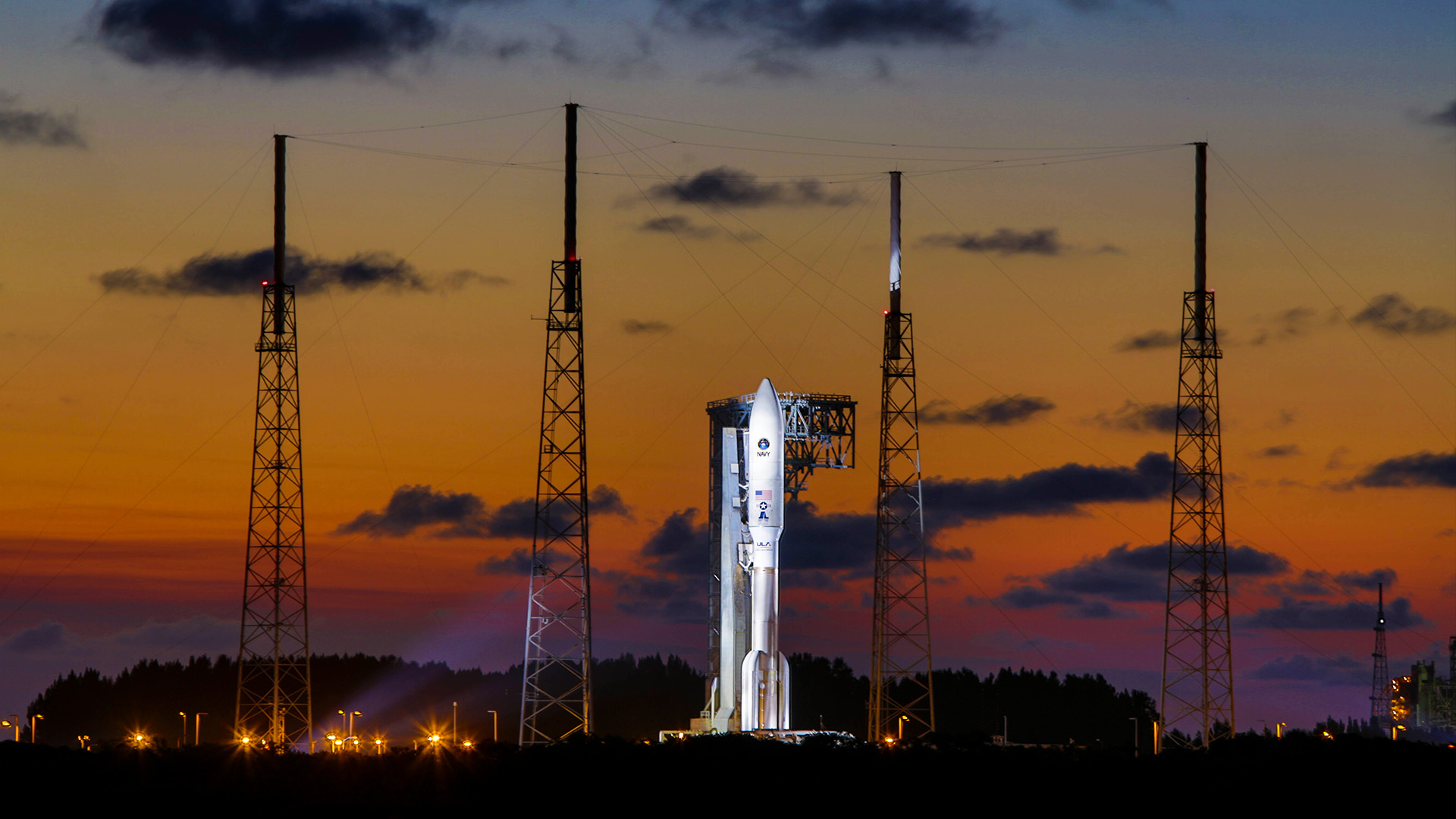News Archive
ULA Launches Heaviest Commercial Satellite on Atlas V
Atlas V ICO-G1 Mission Booklet
CAPE CANAVERAL AIR FORCE STATION, Fla., April 14, 2008 -- A United Launch Alliance Atlas V rocket successfully launched the ICO-G1 satellite at 4:12 p.m. EDT, today. Blasting off from Space Launch Complex 41 here, it marked the first ULA commercial launch of an Atlas V vehicle procured by Lockheed Martin Commercial Launch Services. The ICO-G1 satellite is also the heaviest satellite launched to date by an Atlas V, weighing 6,634 kg or 14,625 lbm when fueled.
ICO Global Communications (Holdings) Limited, a next-generation satellite communications company based in Reston, Va., is deploying G1 as part of its mobile interactive media service, to be known as ICO mim(TM). ICO mim will combine ICO's unique interactive satellite capability with nationwide coverage to deliver a new level of interactive navigation, enhanced roadside assistance and the ultimate mobile video experience, including 10-15 channels of premium television content.
"ULA congratulates our commercial space partners ICO, Lockheed Martin Commercial Launch Services and Space Systems/Loral, the spacecraft manufacturer, on their tremendous mission success," said Jim Sponnick, ULA vice president of Atlas Programs. "At the same time, we all appreciate the dedicated and professional support from our Air Force customers, the Space and Missile Systems Center, and the 45th Space Wing in the success of today's launch. ULA and its employees are proud to have successfully launched this very large and capable satellite for ICO, to enable their enhanced mobile capabilities for consumers worldwide."
This mission, designated AV-014, was launched aboard an Atlas V 421 configuration using the Common Core Booster powered by the RD-180 engine, two Aerojet strap-on solid rocket motors, a Centaur stage powered by one Pratt & Whitney-manufactured RL10 engine, and a 4-meter diameter fairing. This Atlas V flight marked the 210th RD-180 firing. The 13 previous Atlas V launches, 12 from Florida and one from California, included two missions for NASA, three for the NRO, two for the Air Force, and six for commercial customers.
ULA manufactures the Atlas V booster in Denver, Colo., and the Centaur stage in San Diego, Calif. In November 2007, the booster arrived at Cape Canaveral Air Force Station on an Antonov aircraft from Denver, followed by the Centaur stage. The booster was placed on stand at the Vertical Integration Facility for processing Jan. 18, with the integrated spacecraft mate occurring April 2.
ULA's next launch, currently scheduled for May 16 with a launch window of 11:45 a.m - 1:40 p.m. EDT, is the GLAST satellite for NASA aboard a Delta II Heavy rocket from SLC-17B at CCAFS, Fla.
ULA program management, engineering, test and mission support functions are headquartered in Denver, Colo., supported by transition employees in Huntington Beach, Calif. Manufacturing, assembly, and integration operations are located at Decatur, Ala., Harlingen, Texas, San Diego, Calif., and Denver, Colo. Launch operations are located at Cape Canaveral Air Force Station, Fla., and Vandenberg Air Force Base, Calif.
ULA Launches Heaviest Commercial Satellite on Atlas V
Atlas V ICO-G1 Mission Booklet
CAPE CANAVERAL AIR FORCE STATION, Fla., April 14, 2008 -- A United Launch Alliance Atlas V rocket successfully launched the ICO-G1 satellite at 4:12 p.m. EDT, today. Blasting off from Space Launch Complex 41 here, it marked the first ULA commercial launch of an Atlas V vehicle procured by Lockheed Martin Commercial Launch Services. The ICO-G1 satellite is also the heaviest satellite launched to date by an Atlas V, weighing 6,634 kg or 14,625 lbm when fueled.
ICO Global Communications (Holdings) Limited, a next-generation satellite communications company based in Reston, Va., is deploying G1 as part of its mobile interactive media service, to be known as ICO mim(TM). ICO mim will combine ICO's unique interactive satellite capability with nationwide coverage to deliver a new level of interactive navigation, enhanced roadside assistance and the ultimate mobile video experience, including 10-15 channels of premium television content.
"ULA congratulates our commercial space partners ICO, Lockheed Martin Commercial Launch Services and Space Systems/Loral, the spacecraft manufacturer, on their tremendous mission success," said Jim Sponnick, ULA vice president of Atlas Programs. "At the same time, we all appreciate the dedicated and professional support from our Air Force customers, the Space and Missile Systems Center, and the 45th Space Wing in the success of today's launch. ULA and its employees are proud to have successfully launched this very large and capable satellite for ICO, to enable their enhanced mobile capabilities for consumers worldwide."
This mission, designated AV-014, was launched aboard an Atlas V 421 configuration using the Common Core Booster powered by the RD-180 engine, two Aerojet strap-on solid rocket motors, a Centaur stage powered by one Pratt & Whitney-manufactured RL10 engine, and a 4-meter diameter fairing. This Atlas V flight marked the 210th RD-180 firing. The 13 previous Atlas V launches, 12 from Florida and one from California, included two missions for NASA, three for the NRO, two for the Air Force, and six for commercial customers.
ULA manufactures the Atlas V booster in Denver, Colo., and the Centaur stage in San Diego, Calif. In November 2007, the booster arrived at Cape Canaveral Air Force Station on an Antonov aircraft from Denver, followed by the Centaur stage. The booster was placed on stand at the Vertical Integration Facility for processing Jan. 18, with the integrated spacecraft mate occurring April 2.
ULA's next launch, currently scheduled for May 16 with a launch window of 11:45 a.m - 1:40 p.m. EDT, is the GLAST satellite for NASA aboard a Delta II Heavy rocket from SLC-17B at CCAFS, Fla.
ULA program management, engineering, test and mission support functions are headquartered in Denver, Colo., supported by transition employees in Huntington Beach, Calif. Manufacturing, assembly, and integration operations are located at Decatur, Ala., Harlingen, Texas, San Diego, Calif., and Denver, Colo. Launch operations are located at Cape Canaveral Air Force Station, Fla., and Vandenberg Air Force Base, Calif.


